How and with what to properly flavor tobacco at home
Owners of small tobacco plantations on their property often wonder how to flavor tobacco at home, since over time the natural taste and smell of this plant become boring. With the help of aromatization, tobacco mixtures are given special aromatic qualities, creating unique bouquets.
From the article you will learn how to properly flavor tobacco at home and what products are used for this.
What is tobacco flavoring
Aromatization is the final stage of tobacco preparation, during which it acquires a special aroma.
Factories use alcohol-based products for this: it quickly disappears, leaving only a pleasant aroma. Additionally, antifungal compounds, moisturizers and other substances are used to preserve the shelf life.
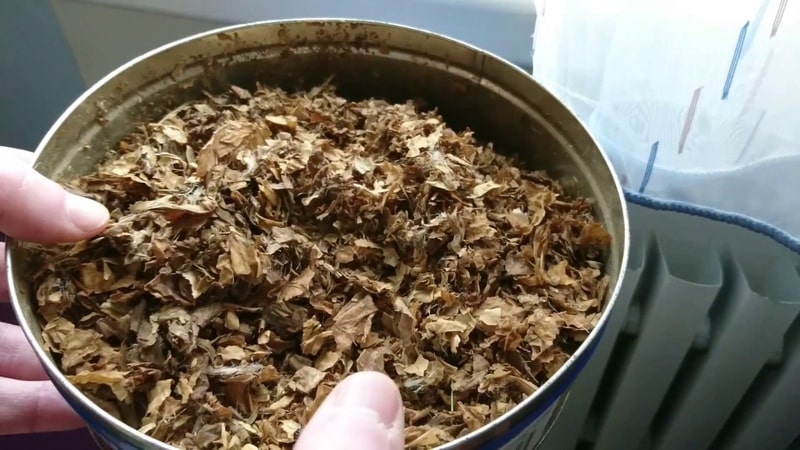
Not everyone likes industrial additives, so homemade tobacco flavoring methods are relevant.
By the way! Aromatization is needed to improve the aroma of the smoking mixture. In this case, the basic taste changes minimally.
When to perform the procedure
Before flavoring, the tobacco is prepared. This is an extremely important and mandatory stage.
The first thing to do with the leaves is to dry them well using one of the following methods:
- Open air in the shade.
- Steamed - in a closed room the temperature is artificially increased with hot air, steam or chimneys.At the same time, the amount of sugar in tobacco remains the same, but the tar content decreases.
- In a sunny place.
- Smoking with smoke from smoldering coals.
After drying, the tobacco is placed in bags or bags and moistened with a spray bottle. Leave it in this state for a day.
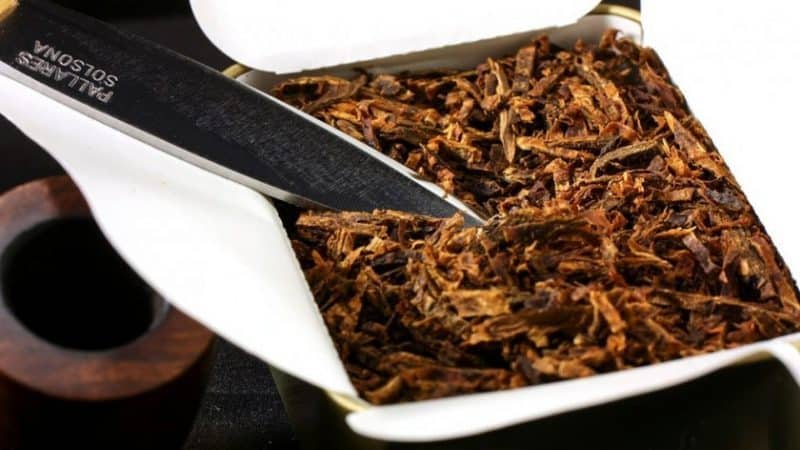
Heat treatment
Additional processing of tobacco is called thermal. It is carried out after or during fermentation.
Three processing methods:
- Ferry — as a result, the sugars are caramelized, the pores in the leaves open and the tobacco is impregnated with flavors more effectively.
- Hot air — sugars are caramelized, excess substances are eliminated.
- By toasting - tobacco comes into contact with a hot surface, its taste changes dramatically.
Types of flavors
There are two types of additives:
- natural - based on organic products - usually edible;
- synthetic - with the addition of chemical compounds.
How tobacco is flavored
To give a pleasant smell, it is not necessary to use a specially prepared aromatic composition. Often fruit or berry juice is sufficient.
Fruits
This is the easiest and most common method. The juice of various fruits gives the smoking mixture a sweet, invigorating aroma.
Citrus option:
- Peel 1 orange and 1 lemon each.
- Pour 200 g of vodka over the zest and let it brew for 24 hours in a glass jar.
- Irrigate the tobacco with the resulting juice.
- Place the mixture in a jar with a tight-fitting lid and keep in a warm place for several days.
Food flavorings
There are many nutritional supplements available in stores. Among them are melon, cherry, mint and other flavors. They are slightly concentrated and give the tobacco a light, unobtrusive aroma.Choose food flavoring based on your preferences. To start, experiment with small portions.
Important! For the first time, the product is diluted with water in a ratio of 2:5.
Leaves of fruit trees
Almost all leaves are used for flavoring: from currant to rowan. The most popular option is with cherry leaf.
Everything is done to taste, but there is a standard recipe:
- Infuse the yellowed cherry leaves. To do this, put them in a jar and add half an apple on top to moisten them. After 2 days, take it out and leave it for another couple of weeks.
- Grind the leaves and mix with tobacco. Take about 1-2 sheets per cigarette.
In an easier cooking method, green cherry leaves that are not too young are used. Those collected in late summer are perfect. They are crushed and mixed into tobacco, about 2 sheets per cigarette.
Honey
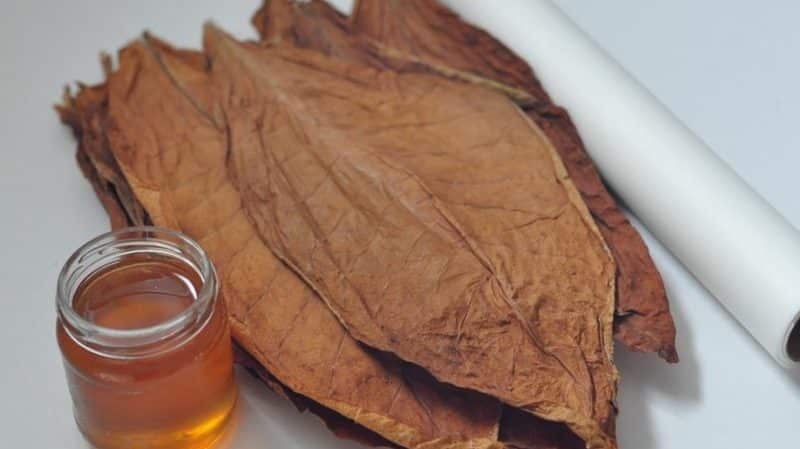
Honey flavoring recipe:
- Dissolve 2 tbsp. l. honey in 200 ml cognac. Add 80 ml of 9% vinegar and 1 ml of glycerin.
- Pour in distilled water to a total volume of 1 liter.
- Moisten the tobacco with this mixture.
- Pack and place in an airtight place at +40…+50°C. Once every 10–14 days, let the tobacco breathe, and then close it again.
It takes 2 months for the mixture to fully infuse.
Hookah mixtures
For flavoring, hookah mixtures are diluted with water in a ratio of 1:10, and the tobacco is treated with a spray bottle.
Important! With this method, the smell will come from the tobacco itself more intensely than from the smoke during smoking.
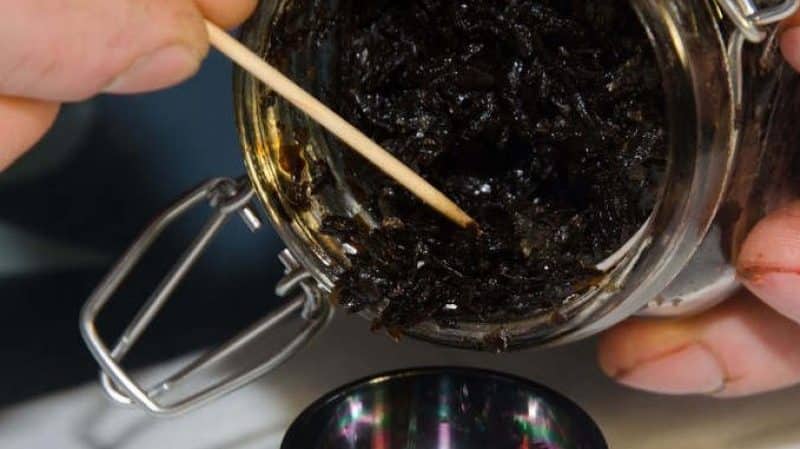
How to make your own flavoring
The easiest way is to use improvised means that can be found in almost every home.
Tea
To do this, place a bag of good tea in a jar of tobacco and close the lid tightly.They are sent to languish for several weeks. Experiment with different drink flavors.
Coffee
Natural ground coffee is used to prepare coffee flavoring. Boil 2 liters of water, cool it and add 0.5 kg of coffee. Mix the mixture thoroughly and keep in the refrigerator for 12 hours.
Apples
The jar is filled halfway with tobacco. The apple is fixed on a thread so that it hangs, holding the neck. To do this, they pierce the fruit with a needle and thread and tie it up. Cover everything tightly with a lid and keep for 3-4 days.
Cinnamon
The sticks are crushed and mixed with moistened tobacco. In this state, leave for several days at room temperature.
Sweet clover
Dried sweet clover flowers have a coumarin aroma. At the initial stage, some grind the plant and add it to tobacco, but experienced tobacco growers advise preparing an alcohol extract for spraying the mixture.
To do this, the flowers are placed in a closed container and filled with moonshine, left for 2 days. The smell of moonshine disappears during this time. After the first step, the tincture looks like a paste. Add 1 tsp to the tobacco, after which it is simmered in a warm place for several hours. Next it is dried.
Another method is more energy-consuming: 100 g of sweet clover flowers are poured with 70% alcohol and kept in a dark place for 2 weeks. The strained tincture is sprinkled onto tobacco and packed into bags for 5–7 hours. Then ventilate.
Fermentation in this case, stage-by-stage: stage 1 lasts 3–5 days at a temperature of +45…+70°C. After this, the mixture is ventilated for 10 minutes and sprinkled with tincture again. The next stage takes several days. After drying, the tobacco is infused for 10 days so that it is completely saturated.
Ways to flavor at home
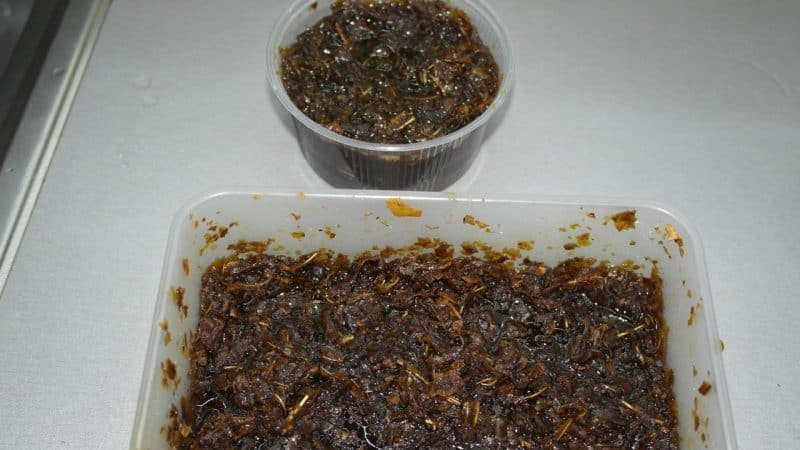
There are several ways to make tobacco aromatic: infusion, water bath, and the use of synthetic additives.
Infusion
Simmering tobacco in a warm environment (at a temperature of +25...+35°C and air humidity of 80–90%) is called infusion. This is a longer, but effective and reliable option.
Water bath
It will help you get the desired aroma faster. The smell disappears in large quantities. In this case, it is impossible to control or reduce the bitterness: the strength at the end is determined by the strength of the base.
Adding synthetic flavors
Synthetic fluids are available and sold in all specialty stores. They allow you to easily and quickly change the aroma of the smoking mixture. The main thing in this matter is to know when to stop. Otherwise, the tobacco will develop a cloying, chemical taste that will be difficult to get rid of. To prevent this from happening, carefully study the instructions on the package.
Saucing recipes
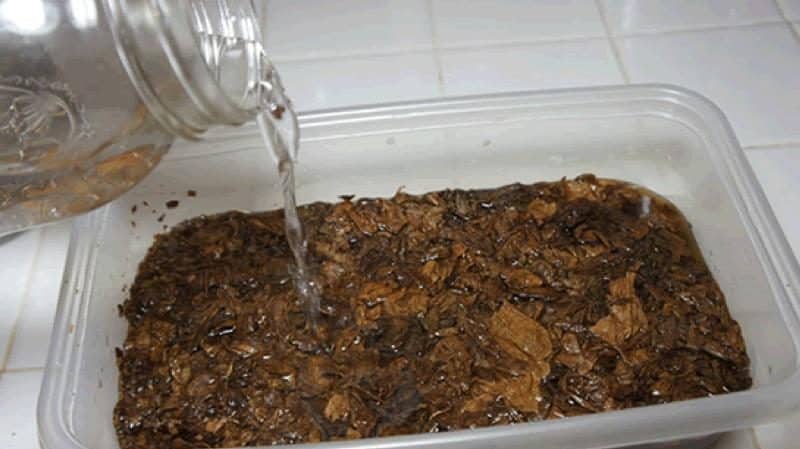
Saucing is the addition of substances that can soften the rough or harsh taste of tobacco and sweeten sour leaves.
To do this, use any berries, honey and alcohol (cognac, rum, gin are suitable):
- Pour water over the berries and put on fire. When boiling, the liquid should evaporate to a thick concentrate.
- A little honey and alcohol are added to the sauce.
- Tobacco leaves, which are better fermented, are placed in a container, poured with the prepared sauce and removed to soak for 2 days.
- After 24 hours, the mixture is placed under a press and heated at a temperature of +60...+70°C for 5 hours.
Flavoring of cut tobacco in production
In factories, leaves are treated with complex chemical compounds and preservatives are added to extend shelf life. Propylene glycol, glycerin and sorbitol are used.
Flavorings are alcohol-based. They are added at the final stage of tobacco processing. At the next stage, moisturizers and antifungal agents are added - often chemicals, less often ordinary vinegar.
Read also:
Varieties and characteristics of tobacco varieties.
Fragrant and tasty Havana tobacco for lovers of Cuban cigars.
When and how to collect tobacco and properly dry it at home.
How to properly store flavored tobacco
To ensure that the components of aromatic substances do not evaporate over time and the mixture does not lose its special flavor bouquet and smell, it must be properly keep. It is best to place the leaves in a jar or plastic container and close tightly.
There is a misconception that if you put a slice of fruit or citrus in a container, it will preserve the aroma for a longer period. In fact, this will start the process in reverse.
The finished product is kept in a dark room with an air humidity of no more than 75%. Avoid exposure to direct sunlight.
Attention! The product is stored for less than a year.
Conclusion
At home, it is easy to give any tobacco a unique aroma. To do this, use the ingredients available in the house and experiment with different combinations. They also order special ready-made flavors, both chemical and based on natural extracts.